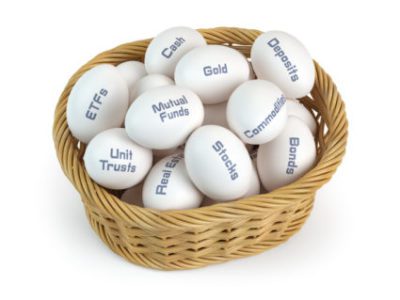 Perhaps there have always been preachers of one solitary investment asset class. I remember Howard Ruff with his Ruff Times touting gold, silver and survival tips. He was correct about inflation in the later 1970s.
Perhaps there have always been preachers of one solitary investment asset class. I remember Howard Ruff with his Ruff Times touting gold, silver and survival tips. He was correct about inflation in the later 1970s.
(According to Dr. Mark Skousen, millions of dollars went through his hands in the 1970s and 1980s. He said, For Ruff, money was like water in his hands – www.markskousen.com.
But Ruff sang the same song in the 1980s and beyond, long after President Reagan and Fed Chairman Paul Volcker beat down inflation with the hammer of record high interest rates. Apparently due to the level of financial fear currently existing, some advisers have taken a similar tack.
These days even normal volatility in the markets has produced such anxiety that many are willing to limit their choices to fixed-income products with guarantees. These include CDs, fixed-interest annuities, and bonds.
What exactly are these? They are all promises to pay an investor a certain amount at certain periods with certain interest rates. The investor is lending money to a bank, a government or a company. He hopes he will get back his principal and some interest on time. He also hopes the interest will be high enough to justify the time spent as a lender without the cash in hand.
The Federal Reserve tells us inflation is not a problem now, so it is doing its best to guarantee consumer prices rise by at least 2 percent per year. Therefore, your money needs to grow faster than inflation. And taxes – don’t forget those. If not, I suppose the good news is you’re only losing money at a guaranteed rate, a little each year. You may be better off buying next year’s toilet paper and toothpaste and forget investing.
One local adviser with a radio show says individual bonds are the only safe course now. Last week he mentioned that one might be able to get a bond paying 5 percent per year for $900 (instead of $1,000, the issue price), but that the fixed interest payment is the paramount issue.
Let’s examine that proposition. Ignoring for the moment that current-issue bonds of investment-grade borrowers paying 5 percent are scarce as hens’ teeth, inflation must not rise to a 4 to 5 percent rate during the bond’s life for this to be a good investment.
The longer you are willing to lend the money, the higher the interest rate you must require to be safe from inflation. But 30-year Treasury bonds were yielding 2.29 percent yesterday as I wrote this. Would you lend the government money for 30 years at that rate? TD Ameritrade’s Yield Grid shows that the lowest rated investment grade bonds, BBB, now yield 4.487 percent per year for those maturing at least 20 years in the future. Same problem.
During some periods, these might be the very best places for your money. But in the past 40 years, we have experienced 14.8 percent 30-year Treasuries in 1980 with 12.5 percent inflation down to the present ultra-low rates (www.thebalance.com). At one time, I personally thought 6 percent was a new floor for our economy. Now I know to never say never. My next column will examine the past decade in light of the diversification principle.
